Off-Grid Renewable Energy Solutions: Science & Innovation
Category: Renewable Energy
Unlocking Off-Grid Renewable Energy Solutions
Navigating the world of off-grid renewable energy can feel overwhelming whether you’re just starting out or already an electrical engineer looking to deepen your understanding of the latest technologies. Maybe you’re seeking reliable, sustainable energy alternatives for a remote cabin, a small business, or a pioneering project where the main grid doesn’t reach. You want clear, science-backed explanations—not just marketing hype—detailing how solar, wind, and emerging renewable systems actually work off-grid, how to size and design them properly, and what innovations are shaping their future. This post is crafted precisely for curious beginners intrigued by green technology and professionals eager for in-depth insights. We break down complex concepts with clarity, explore key components, and share cutting-edge innovations that make off-grid renewable energy more efficient and accessible. Whether your goal is to integrate a stand-alone solar-wind hybrid system, understand battery storage science, or explore novel bioenergy options, you’ll find actionable knowledge here. Read on to empower your energy independence journey with practical science and real innovation.
- Unlocking Off-Grid Renewable Energy Solutions
- Understanding Off-Grid Renewable Energy: Definitions and Core Concepts
- Key Renewable Technologies in Off-Grid Systems
- Energy Storage Solutions and Battery Technologies
- System Design and Sizing Principles for Off-Grid Renewable Energy
- Power Electronics and Control Systems in Off-Grid Renewable Energy
- Hybrid Systems and Integration Strategies
- Emerging Innovations in Off-Grid Technologies
- Environmental and Economic Considerations of Off-Grid Renewable Energy
- Installation, Maintenance, and Practical Challenges of Off-Grid Renewable Energy Systems
- Future Trends and Opportunities in Off-Grid Renewable Energy
Understanding Off-Grid Renewable Energy: Definitions and Core Concepts
The term “off-grid” refers to electrical systems that operate independently from a centralized power grid. Unlike grid-tied systems, which are connected to a utility company’s infrastructure and often rely on it as a backup or supplement, off-grid energy solutions function autonomously. This means they generate, store, and manage electricity entirely on-site, making them essential for remote locations where grid access is unavailable, unreliable, or cost-prohibitive.
At its core, off-grid renewable energy relies primarily on clean, renewable power sources such as solar photovoltaic (PV) panels, wind turbines, and sometimes emerging technologies like micro-hydro or bioenergy generators. These systems typically incorporate energy storage solutions, like batteries, to balance intermittent energy supply with demand. The critical advantage and challenge of off-grid setups lie in their ability to provide consistent, self-sufficient power without external support, emphasizing the importance of proper system sizing, resource assessment, and innovative storage techniques.
Understanding why renewable sources are crucial for off-grid environments involves recognizing their inherent sustainability and independence:
- Environmental Impact: Off-grid renewable systems minimize carbon emissions and reduce reliance on fossil fuels, aligning with global efforts to mitigate climate change.
- Cost-Effectiveness Over Time: While initial investments can be significant, renewables reduce or eliminate ongoing fuel costs associated with diesel generators, a common off-grid fallback.
- Energy Security and Reliability: In remote or disaster-prone areas, renewable off-grid setups provide resilient power sources that are immune to grid failures or fuel supply disruptions.
Mastering these foundational concepts is vital for anyone exploring off-grid renewable energy, setting the stage for deeper insights into system design, component selection, and the latest technological advancements shaping the future of sustainable, independent power solutions.
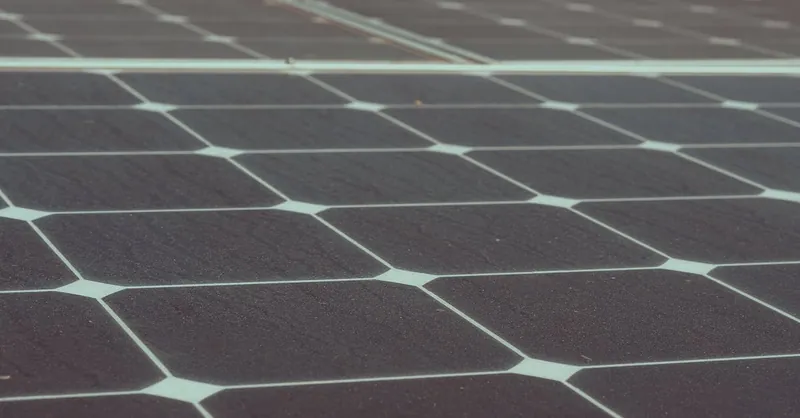
Image courtesy of Kindel Media
Key Renewable Technologies in Off-Grid Systems
Off-grid renewable energy solutions hinge on harnessing clean, local power sources that can reliably function in the absence of grid infrastructure. The most widely adopted and proven technologies for off-grid applications include solar photovoltaic (PV) panels and wind turbines, each offering unique advantages based on resource availability and site conditions. Additionally, more specialized technologies like micro-hydro systems, bioenergy converters, and fuel cells are emerging as powerful complements or alternatives, expanding the toolkit for autonomous energy generation.
Solar Photovoltaic (PV) Panels
Solar PV remains the dominant off-grid renewable technology due to its versatility, scalability, and rapidly declining costs. By converting sunlight directly into electricity through semiconductor materials, solar panels offer efficient, low-maintenance power generation especially suitable for small to medium-scale setups. Advances in PV cell efficiency and durable materials have made solar panels more effective even under varied weather conditions, supporting consistent energy output essential for off-grid reliability. Paired with battery storage, solar PV can enable 24/7 power access, critical for residential cabins, remote research stations, or off-grid communities.
Wind Turbines
Wind energy provides a valuable complement to solar, particularly in locations where wind speeds are consistently moderate to strong. Small to medium-sized wind turbines utilize aerodynamic blades connected to generators that convert kinetic wind energy into electrical power. Wind systems can generate electricity day and night, often offsetting solar’s variability during cloudy or low-light periods. Optimal wind turbine selection and site placement require careful wind resource assessment to maximize energy capture while minimizing mechanical wear and noise.
Micro-Hydro Systems
Where flowing water resources exist, micro-hydro generators offer highly reliable, continuous electricity production by converting kinetic energy of water into electrical energy. These systems range from simple waterwheel designs to advanced turbines capable of harnessing energy from small streams or rivers without large dams. Micro-hydro's steadiness and predictability often surpass other renewables, making it ideal for locations with permanent waterways and stable flow rates.
Emerging Technologies: Bioenergy and Fuel Cells
Beyond the established trio, bioenergy and fuel cells represent cutting-edge solutions expanding off-grid renewable portfolios. Bioenergy leverages organic materials—such as agricultural waste, wood, or specially grown biomass—to produce heat, electricity, or biofuels through processes like anaerobic digestion and gasification. This renewable fuel source is particularly valuable in rural or agricultural contexts where biomass feedstock is abundant.
Fuel cells, on the other hand, convert chemical energy directly into electricity through electrochemical reactions, often using hydrogen produced via renewable methods. Fuel cells promise high efficiency, scalability, and zero-emission operation, making them an attractive option for off-grid power where space or fuel transport constraints exist.
By understanding the characteristics, advantages, and limitations of these primary renewable energy technologies, both beginners and seasoned engineers can tailor off-grid systems that optimize resource use, reduce environmental impact, and ensure consistent, sustainable energy access in isolated environments.
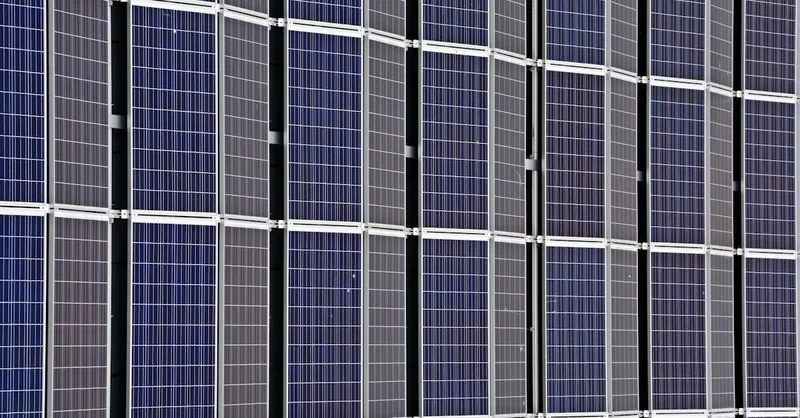
Image courtesy of Pixabay
Energy Storage Solutions and Battery Technologies
A cornerstone of any reliable off-grid renewable energy system is energy storage, enabling continuous power supply despite the intermittent nature of solar and wind resources. Batteries play a pivotal role by storing excess electricity generated during peak production periods and releasing it when energy demand exceeds supply. Understanding the chemistry, technology, and performance characteristics of various battery types is critical for designing efficient, durable storage solutions that meet specific off-grid needs.
Lithium-Ion Batteries
Lithium-ion (Li-ion) batteries have become the preferred choice for modern off-grid systems due to their high energy density, long cycle life, and favorable charge-discharge efficiency—often exceeding 90%. These batteries rely on lithium ions moving between the cathode and anode during charging and discharging, utilizing advanced electrode materials such as lithium iron phosphate (LiFePO4) or nickel manganese cobalt oxide (NMC). Their lightweight and compact form factor make them ideal for remote installations where space and weight are constraints. The high upfront cost is often offset by reduced maintenance and superior lifespan, providing cost-effective performance over time.
Lead-Acid Batteries
Lead-acid batteries represent a more traditional and widely accessible energy storage technology. They operate through a reversible chemical reaction between lead dioxide and sponge lead electrodes submerged in sulfuric acid electrolyte. Though bulkier and heavier than lithium-ion batteries, lead-acid systems—particularly deep-cycle variants—offer reliable performance at a lower initial investment. Their key disadvantages include lower energy density, shorter cycle life, and the need for regular maintenance such as electrolyte level monitoring. Nevertheless, lead-acid batteries remain popular in certain off-grid applications due to their robustness and established supply chains.
Flow Batteries
Emerging as an innovative storage solution, flow batteries store energy in liquid electrolytes contained in external tanks, which circulate through an electrochemical cell during charge and discharge. This design decouples power capacity from energy capacity, allowing for scalable storage tailored to specific demands. Common flow battery chemistries include vanadium redox and zinc-bromine, both known for long cycle life and easy recyclability. Their relatively slow response time and higher complexity traditionally limited off-grid use, but ongoing research and cost reductions are positioning flow batteries as promising candidates for large-scale, stationary energy storage where longevity and sustainability are priorities.
By carefully selecting and integrating these battery technologies, off-grid renewable energy systems can achieve optimal energy management, ensuring stable power availability even during periods of low generation. Balancing factors such as energy density, cost, efficiency, maintenance needs, and lifespan is essential to tailor storage solutions that empower true energy independence for beginners and experienced engineers alike.

Image courtesy of Castorly Stock
System Design and Sizing Principles for Off-Grid Renewable Energy
Designing an effective off-grid renewable energy system begins with accurately assessing energy demand and the site’s renewable resource potential. Proper system sizing ensures that generation and storage components reliably meet load requirements without excessive oversizing, which can inflate costs and reduce cost-effectiveness. This balance is critical for sustainable, resilient, and economically viable off-grid power solutions.
Calculating Load Demands
The first step in system design is to perform a detailed load analysis:
- Inventory all electrical appliances and devices: List each device’s power rating (in watts) and estimated daily usage hours.
- Calculate daily energy consumption: Multiply the power rating by usage time for each device, then sum the results to get the total daily energy requirement in watt-hours (Wh).
- Consider peak power demand: Identify the maximum simultaneous power needed to size inverter and wiring components appropriately.
- Add a safety margin: Typically, add 10-20% extra capacity to accommodate future demand growth or inefficiencies.
This foundational load profile shapes all subsequent decisions on system component sizing, ensuring that energy supply aligns tightly with user needs.
Solar and Wind Resource Assessment
Accurately gauging solar irradiance and wind availability at the installation site is vital for optimizing system performance:
- Solar Assessment: Use tools like PVGIS or NASA’s SSE datasets to determine average daily solar insolation (kWh/m²/day). Consider shading, panel tilt, orientation, and seasonal variability. A minimum average of 4 peak sun hours per day is generally recommended for solar feasibility.
- Wind Assessment: Analyze local wind speed data at hub height, ideally over a year, using anemometers or wind maps. Average wind speeds above 4-5 m/s are typically needed for effective small turbine operation. Turbulence, obstacles, and topography also influence turbine placement and expected output.
Combining these data allows engineers and system designers to select the right mix of solar panels and wind turbines, exploiting complementary resource patterns to maximize energy yield throughout the year.
Sizing Generation and Storage Components
With load and resource data in hand, you can optimize the sizing of generation and storage elements:
- Generation Sizing:
- For solar, calculate panel array capacity by dividing daily load by the average peak sun hours and system efficiency (typically 75-85% due to losses).
-
For wind, select turbine capacity based on average wind speed and expected production curves, ideally sizing to cover a significant portion of load during low solar periods.
-
Storage Sizing:
- Battery capacity is defined by the desired autonomy days—the number of days the system can supply power without generation (usually 2 to 5 days).
- To find battery size in ampere-hours (Ah), convert daily load to amp-hours and multiply by autonomy days, then factor in the depth of discharge (DoD) to preserve battery life (e.g., 50-80% DoD).
- Consider system voltage and temperature effects on battery performance and lifetime.
Thoughtful sizing balances upfront investment with long-term reliability, preventing undersized systems prone to outages or oversized ones that waste capital.
By combining rigorous load calculations, precise resource assessment, and strategic generation and storage sizing, off-grid renewable energy systems can achieve high reliability and cost-effectiveness. These principles empower designers and users to build resilient, sustainable power solutions adapted to their unique environmental and usage conditions—laying the groundwork for truly independent energy systems.
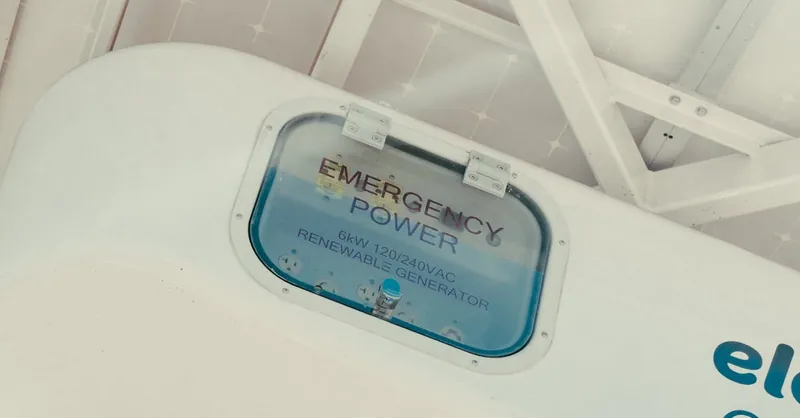
Image courtesy of Kindel Media
Power Electronics and Control Systems in Off-Grid Renewable Energy
At the heart of every efficient off-grid renewable energy system lies a sophisticated network of power electronics and control systems that manage, convert, and optimize electrical energy flow. These components ensure seamless integration between variable energy sources—like solar panels and wind turbines—and energy storage devices such as batteries, while delivering stable, usable power to your loads. Understanding the roles of inverters, charge controllers, DC-DC converters, and modern digital controllers is essential for both beginners and electrical engineers aiming to maximize system performance, reliability, and lifespan.
Inverters: Converting DC to Usable AC Power
Since most renewable energy sources and storage batteries deliver electricity in direct current (DC) form, while most household appliances and electrical equipment operate on alternating current (AC), inverters are indispensable. These devices convert DC into AC at standard voltages and frequencies (e.g., 120/240V, 50/60Hz), enabling off-grid systems to power everyday devices without modification.
Key inverter features that boost off-grid system efficiency include:
- Pure sine wave output: Ensures compatibility with sensitive electronics and improves overall safety.
- Maximum power point tracking (MPPT) integration: Optimizes power extraction from solar panels.
- Grid-forming capability: Allows the inverter to regulate voltage and frequency independently, critical in standalone systems.
- Load management and protection functions: Prevent overloads and enhance system stability.
Charge Controllers: Protecting Batteries and Optimizing Charging
Charge controllers regulate the flow of energy from solar panels or wind turbines to batteries, preventing overcharging and deep discharging that shorten battery life. Among the main types, Pulse Width Modulation (PWM) and Maximum Power Point Tracking (MPPT) controllers dominate off-grid applications. MPPT controllers stand out by dynamically adjusting the electrical operating point to harvest maximum power from renewable sources under varying irradiance and temperature conditions, sometimes increasing energy capture by up to 30% compared to PWM.
DC-DC Converters and Power Conditioning
To match voltage levels between system components and improve overall efficiency, DC-DC converters play a vital role. These devices step up or step down voltage where needed—such as boosting low-voltage solar panel outputs to charge a higher-voltage battery bank or regulating battery output to feed inverters. High-quality converters with high efficiency and low thermal losses significantly reduce energy wastage, extending system runtime and reducing heat-related degradation.
Advanced Digital Controllers and System Optimization
Modern off-grid renewable energy systems increasingly incorporate digital control units and smart energy management systems that monitor, analyze, and adjust system operation in real-time. These controllers leverage embedded microprocessors and communication protocols to optimize every aspect of system performance:
- Automated load prioritization based on battery state-of-charge and generation forecasts.
- Remote monitoring and diagnostics enhancing maintenance and reliability.
- Integration with weather data to predict resource availability and fine-tune system responses.
- Adaptive algorithms for balancing hybrid sources, such as solar-wind-battery combinations.
By employing these advanced control strategies, off-grid systems achieve higher energy efficiency, longer equipment life, and greater reliability, empowering users with stable power supply even under fluctuating environmental conditions.
In conclusion, the synergy of inverters, charge controllers, converters, and intelligent digital controllers forms the backbone of efficient off-grid renewable energy systems. Mastery of these power electronics and control solutions enables both beginners and engineers to harness the full potential of renewable sources, ensuring resilient, cost-effective, and sustainable energy independence.

Image courtesy of ranjeet .
Hybrid Systems and Integration Strategies
Combining multiple renewable energy sources into a hybrid off-grid system unlocks significant benefits in terms of efficiency, reliability, and resilience. Rather than relying on a single energy technology, hybridization strategically leverages the complementary strengths of solar panels, wind turbines, micro-hydro, or bioenergy converters to provide a more consistent and balanced power supply. For example, solar energy excels during sunny daytime hours, while wind turbines often generate power at night or during overcast conditions—together reducing the intermittency challenges inherent in standalone systems.
The advantages of hybrid renewable systems include:
- Improved energy availability: Diversifying energy inputs fills production gaps, extending electricity availability around the clock.
- Optimized resource use: Hybrid designs maximize output based on local resource variability, leading to higher overall system yield.
- Enhanced system resilience: Multiple generation pathways increase redundancy, reducing downtime risks caused by single-source failures.
- Cost-effectiveness: By balancing capacity across sources, hybrid setups can reduce the size and cost of energy storage components.
Smart Energy Management for Optimal Performance
Integral to hybrid system success is smart energy management, employing advanced control algorithms and real-time monitoring to coordinate power flows between generation units, storage batteries, and loads. Intelligent energy management systems ensure that renewable inputs are prioritized, batteries are charged efficiently, and critical loads receive uninterrupted power—even under fluctuating weather conditions.
Key features of smart management strategies include:
- Dynamic load prioritization: Assigning energy supply according to load importance and system state-of-charge.
- Predictive resource forecasting: Utilizing weather and historic generation data to anticipate renewable output and adjust dispatch plans.
- Automated source switching: Seamlessly balancing power from solar, wind, biomass, or backup generators to optimize efficiency.
- Battery health optimization: Managing charge cycles to extend battery lifespan and maintain optimal performance.
Together, hybrid systems integrated with advanced energy management represent the cutting edge of off-grid renewable technology. This synergy enables both beginners and electrical engineers to design robust, efficient, and scalable power solutions tailored to diverse off-grid environments—paving the way for truly sustainable energy independence.
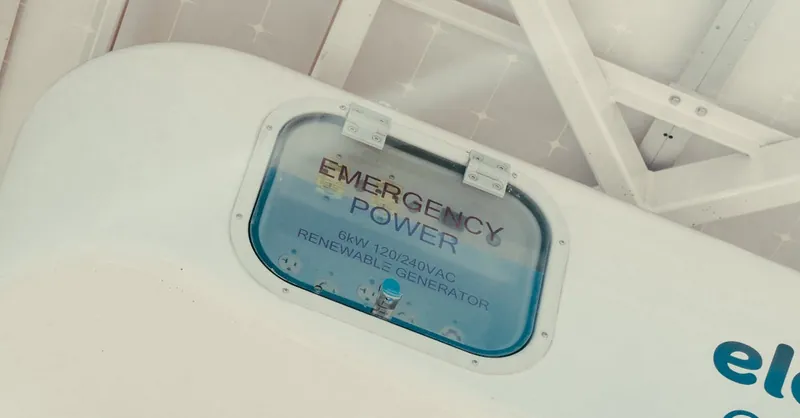
Image courtesy of Kindel Media
Emerging Innovations in Off-Grid Technologies
The landscape of off-grid renewable energy is rapidly evolving, driven by groundbreaking scientific advances and innovative engineering that enhance efficiency, affordability, and system intelligence. Among the most promising emerging technologies redefining off-grid power solutions are perovskite solar cells, next-generation small-scale wind turbines, advanced biofuels, and AI-based energy management systems. These innovations not only improve generation and storage but also offer smarter, more adaptive energy usage tailored to diverse off-grid needs.
Perovskite Solar Cells: Revolutionizing Solar Efficiency and Cost
Perovskite solar cells represent a transformative leap in photovoltaic technology. Utilizing a unique crystal structure that enables superior light absorption and charge transport, these cells have achieved rapid efficiency gains, now rivaling traditional silicon panels. Crucially for off-grid applications, perovskite cells offer:
- High power conversion efficiencies (exceeding 25%) at potentially lower manufacturing costs.
- Lightweight and flexible form factors, ideal for portable or rooftop deployment in remote areas.
- Tolerance to low-light conditions and diverse spectral sensitivities, expanding usability in variable climates.
Ongoing research aims to improve their stability and lifespan, signaling a future where perovskite-based solar modules could dramatically reduce the size, weight, and cost of off-grid solar arrays while delivering superior energy yields.
Small-Scale Wind Innovations: Enhanced Turbine Design and Materials
Recent advances in small-scale wind turbines focus on optimizing aerodynamic blade shapes, lightweight composite materials, and variable-speed generators to maximize energy capture even in low-wind environments typical of many off-grid sites. Key innovations include:
- Vertical-axis turbines with omni-directional wind capture, reducing installation complexity and enabling urban or constrained spaces.
- Rare-earth free magnets and advanced power electronics that improve generator efficiency and reduce maintenance.
- Modular, plug-and-play designs facilitating easier transport and setup in remote locations.
Together, these enhancements make wind power a more reliable and cost-effective resource for standalone systems, complementing solar generation especially during nighttime or overcast periods.
Advanced Biofuels and Bioenergy Technologies
In off-grid contexts where biomass resources are abundant, advanced biofuels and bioenergy converters are gaining traction. Innovations include:
- Second-generation biofuels produced from non-food biomass and agricultural residues, minimizing environmental impact while expanding sustainable fuel availability.
- Microbial fuel cells and enzymatic biofuel reactors, which convert organic waste directly into electrical energy or hydrogen, providing on-site, renewable power sources.
- Hybrid bioenergy systems integrating gasification or anaerobic digestion with fuel cells or small turbines to boost efficiency.
Such technologies offer scalable, renewable alternatives to diesel generators and can be engineered for clean, low-emission off-grid power production tailored to local biomass feedstocks.
AI-Based Energy Management Systems: Smarter, Adaptive Control
The integration of artificial intelligence (AI) and machine learning into off-grid energy management is revolutionizing system control and optimization. AI algorithms enable:
- Real-time predictive analytics using weather forecasts and consumption patterns to optimize generation and storage dispatch.
- Dynamic load balancing and prioritization to extend battery life and reduce energy waste.
- Fault detection and autonomous troubleshooting, improving system resilience and reducing maintenance costs.
- User behavior insights and automated recommendations for energy savings and peak load management.
By making off-grid systems intelligently adaptive, AI-based management maximizes renewable utilization while ensuring continuous, reliable power—even in highly variable resource conditions.
Collectively, these emerging innovations in solar materials, wind turbine technologies, bioenergy, and smart control systems are poised to revolutionize off-grid renewable energy, pushing the boundaries of efficiency, affordability, and ease of use. For beginners and electrical engineers alike, staying informed about these cutting-edge advancements is crucial to designing resilient, future-ready autonomous power solutions that meet the world’s growing demand for clean, independent energy.

Image courtesy of Michael Pointner
Environmental and Economic Considerations of Off-Grid Renewable Energy
When evaluating off-grid renewable energy solutions, it is crucial to balance the environmental benefits with the economic costs and challenges to ensure truly sustainable and viable power systems. Off-grid renewables offer significant ecological advantages by drastically reducing greenhouse gas emissions, minimizing pollution, and preserving natural resources often degraded by fossil fuel extraction and combustion. However, they also pose unique environmental challenges that require careful management, including the impact of manufacturing materials, land use, and end-of-life disposal or recycling of components like batteries and solar panels.
Ecological Benefits and Challenges
The primary environmental benefits of off-grid renewable systems include:
- Carbon footprint reduction: By replacing diesel generators or grid electricity derived from fossil fuels, off-grid renewables cut CO₂ emissions, mitigating climate change and improving local air quality.
- Renewable resource utilization: Solar, wind, micro-hydro, and bioenergy harness naturally replenishing sources, reducing dependence on finite fuels and enhancing ecosystem resilience.
- Lower water usage: Unlike thermal power plants, most renewable technologies require minimal water for operation, addressing concerns around water scarcity in many off-grid areas.
Conversely, several challenges must be addressed:
- Material sourcing and lifecycle impacts: Production of PV panels, batteries (especially lithium and lead-based), and wind turbine components consumes energy and raw materials, some of which involve mining with environmental degradation.
- Waste management and recycling: Proper disposal or recycling frameworks are needed for aging batteries and solar panels to prevent toxic leakage and resource loss.
- Land and habitat considerations: Site selection must minimize disruption to local ecosystems, wildlife habitats, and agricultural lands, especially for larger wind or solar arrays.
Economic Factors and Incentives
Implementing off-grid renewable energy involves multiple economic considerations that impact upfront investment and long-term viability:
- Capital Costs: Initial expenditures for equipment, installation, and energy storage often represent the most significant barrier. However, rapid cost declines in solar PV and lithium-ion batteries have improved affordability dramatically.
- Operational Savings: Off-grid renewables eliminate fuel costs and reduce maintenance relative to fossil-fueled generators, achieving favorable operational expenditure (OPEX) profiles over system lifetimes.
- Lifecycle Cost Analysis: Evaluating total cost of ownership, including installation, maintenance, replacement, and disposal, reveals that well-designed renewable off-grid systems frequently outperform fossil fuel alternatives financially over 10-20 years.
- Government Incentives and Grants: Many jurisdictions offer tax credits, subsidies, or rebates for renewable installations, directly lowering capital costs and accelerating return on investment.
- Social and Economic Co-Benefits: Beyond direct costs, off-grid renewables foster energy independence, local job creation, and improved living standards in remote areas, often translating into broader economic uplift.
Taken together, these environmental and economic considerations highlight that while off-grid renewable energy presents some challenges, their benefits overwhelmingly support widespread adoption. Thoughtful system design incorporating lifecycle analysis, responsible material sourcing, and leveraging policy incentives ensures that off-grid renewables become a cornerstone of sustainable, cost-effective energy independence worldwide.
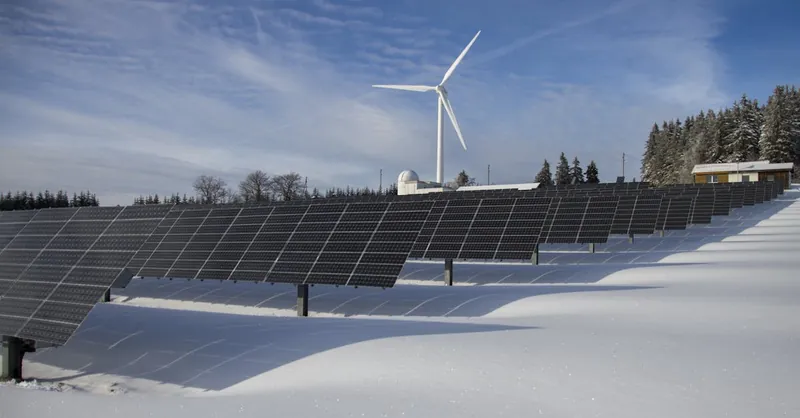
Image courtesy of Pixabay
Installation, Maintenance, and Practical Challenges of Off-Grid Renewable Energy Systems
Successfully deploying off-grid renewable energy solutions requires careful attention to site selection, installation procedures, ongoing maintenance, and troubleshooting common issues to ensure safety, reliability, and optimal performance. Whether installing solar panels, wind turbines, or hybrid systems, addressing these practical aspects early on not only enhances system longevity but also maximizes energy yield and operational efficiency.
Key Site Considerations for Installation
Site conditions critically influence renewable system effectiveness and must be evaluated thoroughly:
- Resource Availability and Accessibility
- Ensure adequate solar irradiance levels or consistent wind speeds based on detailed site assessment tools.
-
Consider terrain accessibility for transporting and installing heavy equipment, especially batteries and wind turbines.
-
Structural Stability and Safety
- Verify that mounting surfaces (roofs, poles, or ground mounts) can support the load and withstand local weather conditions such as high winds or snow loads.
-
For wind turbines, select tower heights that avoid turbulence caused by nearby structures or vegetation.
-
Electrical Safety and Code Compliance
- Adhere to local electrical codes, grounding requirements, and wiring standards to prevent hazards such as electrical shock, fires, or damage to equipment.
- Proper labeling, use of circuit breakers, and surge protection devices enhance safety and system robustness.
Maintenance Best Practices
Routine maintenance ensures reliable operation and prolongs the lifespan of off-grid renewable systems:
- Solar Panels: Clean panels regularly to remove dust, leaves, or snow that can block sunlight and degrade output. Inspect for cracks, corrosion, or loose connections, especially after storms.
- Wind Turbines: Check blades for damage or wear, lubricate moving parts periodically, and verify tower stability and guy wire tension. Monitor for unusual vibrations or noises that may signal mechanical issues.
- Batteries: Maintain proper electrolyte levels for lead-acid types, ensure terminals are clean and tight, and monitor voltage and temperature. For lithium-ion batteries, implement battery management system (BMS) alerts and avoid deep discharges that reduce lifespan.
- Power Electronics: Inspect charge controllers and inverters for overheating, firmware updates, and proper ventilation. Confirm that sensors and meters remain calibrated and functional.
Common Troubleshooting Challenges
Off-grid setups may face issues that require systematic diagnostics:
- Underperformance or Power Deficits: Often caused by shading, dirty panels, improper wiring, faulty inverters, or depleted batteries. Regular monitoring with energy meters can aid early detection.
- Battery Failures: Symptoms include rapid voltage drops, inability to hold charge, or swelling cases. Overdischarging, extreme temperatures, or aging cells are typical culprits.
- Overvoltage or Equipment Shutdowns: May occur due to malfunctioning charge controllers or inverter faults, necessitating component testing and calibration.
- Wind Turbine Mechanical Failures: Bearing wear, blade imbalance, or electrical connector corrosion may lead to system downtime and require preventive maintenance.
By thoroughly assessing site conditions, adhering to safe installation practices, implementing structured maintenance routines, and proactively addressing common operational challenges, users can significantly improve the durability and performance of off-grid renewable energy systems. This practical knowledge is essential for beginners and electrical engineers striving to build resilient, efficient, and long-lasting renewable power solutions in remote or off-grid environments.
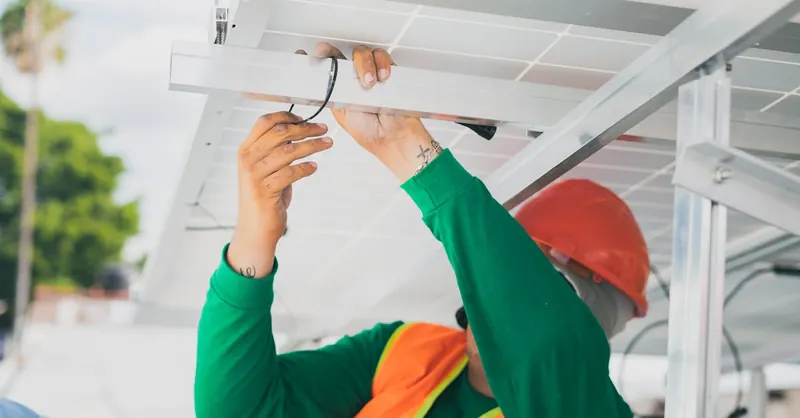
Image courtesy of Los Muertos Crew
Future Trends and Opportunities in Off-Grid Renewable Energy
As global commitment to sustainable energy intensifies, the off-grid renewable energy sector is poised for transformative growth driven by advancements in technology, evolving policy frameworks, and expanding market dynamics. Understanding these future trends and opportunities is essential for beginners and electrical engineers aiming to stay at the forefront of innovation and maximize the impact of off-grid systems worldwide.
Technological Trends Shaping Off-Grid Energy
-
Integration of Energy Storage Innovations
The rapid evolution of battery technologies, including solid-state batteries, flow batteries, and ultra-long-life lithium chemistries, is set to vastly improve energy storage density, safety, and lifecycle costs. Coupled with cost declines, these advancements will enable more compact and resilient storage solutions, reducing system size and enhancing uptime—key for remote off-grid users. -
AI-Driven Energy Management and Predictive Maintenance
Artificial intelligence and machine learning algorithms will increasingly optimize hybrid system operations by forecasting renewable generation, automating load management, and predicting component failures before they occur. This smart control will enhance system efficiency, reduce downtime, and extend equipment lifespan in off-grid installations. -
Modular and Scalable System Architectures
Emerging design philosophies emphasize modularity, enabling easier scalability and customization based on dynamic energy needs. Plug-and-play components for solar, wind, and storage will facilitate faster deployment and upgradeability in diverse off-grid contexts from rural electrification to disaster relief. -
Advances in Renewable Materials and Manufacturing
Innovations such as perovskite photovoltaics, biodegradable batteries, and 3D-printed turbine components will lower environmental footprints and manufacturing costs. These technologies will make off-grid renewable systems more accessible and sustainable, particularly in resource-constrained settings.
Policy and Market Developments Driving Adoption
-
Global Renewable Energy Targets and Off-Grid Electrification Initiatives
Governments and international agencies are increasing financial incentives, subsidies, and regulatory support specifically targeting off-grid renewable projects, especially in underserved rural areas of Africa, Asia, and Latin America. This policy momentum accelerates technology adoption and attracts private sector investment. -
Emerging Business Models and Financing Solutions
Innovative market mechanisms like pay-as-you-go solar, microgrids-as-a-service, and crowd-funded projects are reducing upfront costs and mitigating financial risks for consumers. This democratization of access fosters broader penetration of off-grid renewables, creating vibrant markets with diverse stakeholders. -
Standardization and Quality Assurance Frameworks
Development of international standards and certification schemes for off-grid components and systems enhances reliability, safety, and consumer confidence. This harmonization assists manufacturers, installers, and financiers in scaling best practices, accelerating global dissemination of proven solutions.
Expanding Opportunities for Electrical Engineers and Enthusiasts
For professionals and enthusiasts, the future holds fertile ground to engage in interdisciplinary innovation, system optimization, and policy advocacy. Integrating emerging technologies with data analytics, enhancing microgrid resilience, and developing cost-effective hybrid solutions promise rich avenues for research and practical impact. Additionally, cross-sector collaboration between engineers, policymakers, and communities will be instrumental in designing inclusive, equitable off-grid renewable energy infrastructures globally.
By closely monitoring these evolving technologies, policies, and market trends, readers can proactively position themselves to harness the full potential of off-grid renewable energy—driving sustainable development and energy independence well into the future.
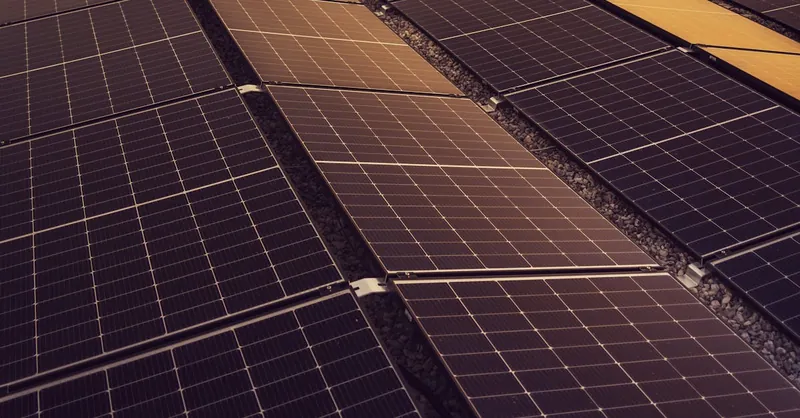
Image courtesy of Michael Pointner
